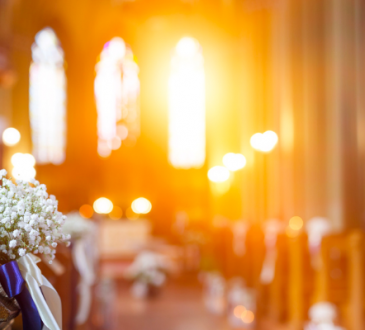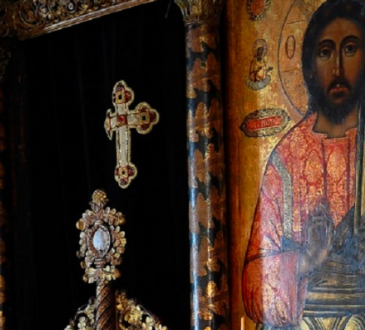The Timeless Beautiful Church Sculptures: A Glimpse into Spiritual Artistry
In the vast tapestry of human history, few art forms have captured the essence of faith and spirituality as profoundly as church sculptures. These masterpieces, etched in stone and immortalized in cathedrals, basilicas, and chapels around the world, stand as testaments to the artistic ingenuity and unwavering devotion of their creators. From the intricately carved reliefs to the towering statues that adorn the facades, each element tells a story, weaving together the threads of religious narrative, cultural expression, and aesthetic brilliance. Let’s follow us to find out Beautiful Church Sculptures in this post!
Contents
The Timeless Beautiful Church Sculptures
The Historical Tapestry:

The tradition of adorning religious spaces with sculptures dates back centuries, with roots embedded in various cultures and civilizations. The ancient Greeks, renowned for their artistry, paved the way for sculptural expression with their depictions of gods and goddesses. As Christianity spread across Europe, the art of sculpture became a powerful tool for conveying religious teachings and stirring spiritual emotions.
During the medieval period, the grand cathedrals of Europe became canvases for intricate sculptures that adorned both the exterior and interior of these sacred structures. The Gothic cathedrals, with their soaring spires and intricate flying buttresses, became the perfect backdrop for sculptors to showcase their skill. The sculptures not only served a decorative purpose but also played a crucial role in educating the largely illiterate populace about biblical stories and religious doctrines.
Symbolism and Allegory:
Church sculptures are a rich repository of symbolism and allegory. Every carved figure, every meticulously chiseled detail carries profound meaning, offering worshippers and visitors a visual journey through the sacred narratives. Saints, angels, and biblical figures come to life in stone, their expressions frozen in time, inviting contemplation and reflection.
Take, for example, the famous sculptures of Chartres Cathedral in France. The intricate tympanum above the central portal depicts the Last Judgment, with Christ seated in majesty, surrounded by angels and apostles. The damned and the saved are portrayed with vivid detail, each figure contributing to the overarching narrative of divine judgment. Every element, from the gestures of the figures to the animals at their feet, carries layers of meaning that invite the viewer to delve deeper into the theological significance.
Expressing Devotion through Form:
One cannot discuss church sculptures without delving into the profound expressions of devotion that emanate from these works of art. Sculptors, often anonymous artisans working in service to the divine, poured their faith and reverence into every stroke of the chisel. The result is not merely an assemblage of stone figures but a palpable manifestation of devotion and piety.
Michelangelo’s iconic “Pieta” in St. Peter’s Basilica is a prime example of how sculpture can encapsulate the essence of religious devotion. The tender portrayal of Mary cradling the lifeless body of Jesus transcends the medium of stone, evoking a powerful emotional response from those who behold it. The mastery of technique is fused seamlessly with the artist’s profound spirituality, creating a work of art that transcends its physical form.
The Intersection of Faith and Art:
Church sculptures serve as a unique intersection of faith and art, where the sacred and the aesthetic converge. The very act of sculpting religious figures and scenes becomes a form of prayer, a way for artists to communicate with the divine and contribute to the spiritual enrichment of their communities.
In the Baroque period, artists such as Gian Lorenzo Bernini elevated the concept of sculpture as a spiritual experience. Bernini’s intricate works, including the breathtaking “Ecstasy of Saint Teresa” in the Cornaro Chapel, meld realism and theatricality to convey the mysticism of the saint’s encounter with divine love. The dynamic compositions and emotional intensity of such sculptures make them not only expressions of religious themes but also invitations to participate in the spiritual drama they depict.
Preserving Heritage and Tradition:

The conservation and restoration of church sculptures play a crucial role in preserving cultural heritage and tradition. Over the centuries, these sculptures have weathered the passage of time, facing the challenges of environmental factors, human interventions, and, in some cases, deliberate destruction. Organizations and conservators around the world work tirelessly to ensure that these masterpieces endure for future generations.
The ongoing restoration efforts at the Sagrada Familia in Barcelona, designed by the visionary architect Antoni Gaudí, exemplify the commitment to safeguarding these artistic treasures. The intricate sculptures that adorn the basilica’s Nativity and Passion facades are meticulously cleaned and repaired, allowing visitors to experience the intended splendor of Gaudí’s vision.
Global Diversity in Church Sculptures:
The beauty of church sculptures transcends geographical boundaries, with diverse cultures contributing to the rich tapestry of religious art. From the serene sculptures of Buddhist temples in Southeast Asia to the vibrant reliefs adorning Hindu temples in India, the world is replete with examples of how different faiths express their spirituality through the art of sculpture.
In Ethiopia, the rock-hewn churches of Lalibela stand as a testament to the ancient Christian traditions of the region. Carved from solid rock in the 12th century, these churches feature intricate sculptures that narrate biblical stories and depict saints in a style unique to Ethiopian Christian art. The fusion of local artistic traditions with Christian themes creates a visual language that speaks to the cultural identity of the Ethiopian Christian community.
Challenges and Controversies:

While church sculptures have endured through the ages, they are not immune to the challenges and controversies that accompany the evolution of societal norms and values. In recent times, discussions around cultural appropriation, representation, and the role of religious art in a secular world have sparked debates about the significance and relevance of traditional church sculptures.
Contemporary artists are reinterpreting religious themes in novel ways, challenging conventional notions of what constitutes sacred art. The Vatican’s embrace of modern sculptures, such as the bronze “Resurrection” by Pericle Fazzini in St. Peter’s Square, reflects an openness to evolving expressions of faith through art.
Conclusion
Church sculptures, with their timeless beauty and profound spiritual resonance, continue to captivate the hearts and minds of people around the world. These masterpieces, whether carved by anonymous artisans in medieval Europe or sculpted by renowned artists in the present day, serve as bridges between the earthly and the divine. As we marvel at the intricate details and contemplate the symbolic richness of these sculptures, we are invited to participate in a visual dialogue that transcends time and connects us to the enduring power of human creativity and spiritual devotion.



